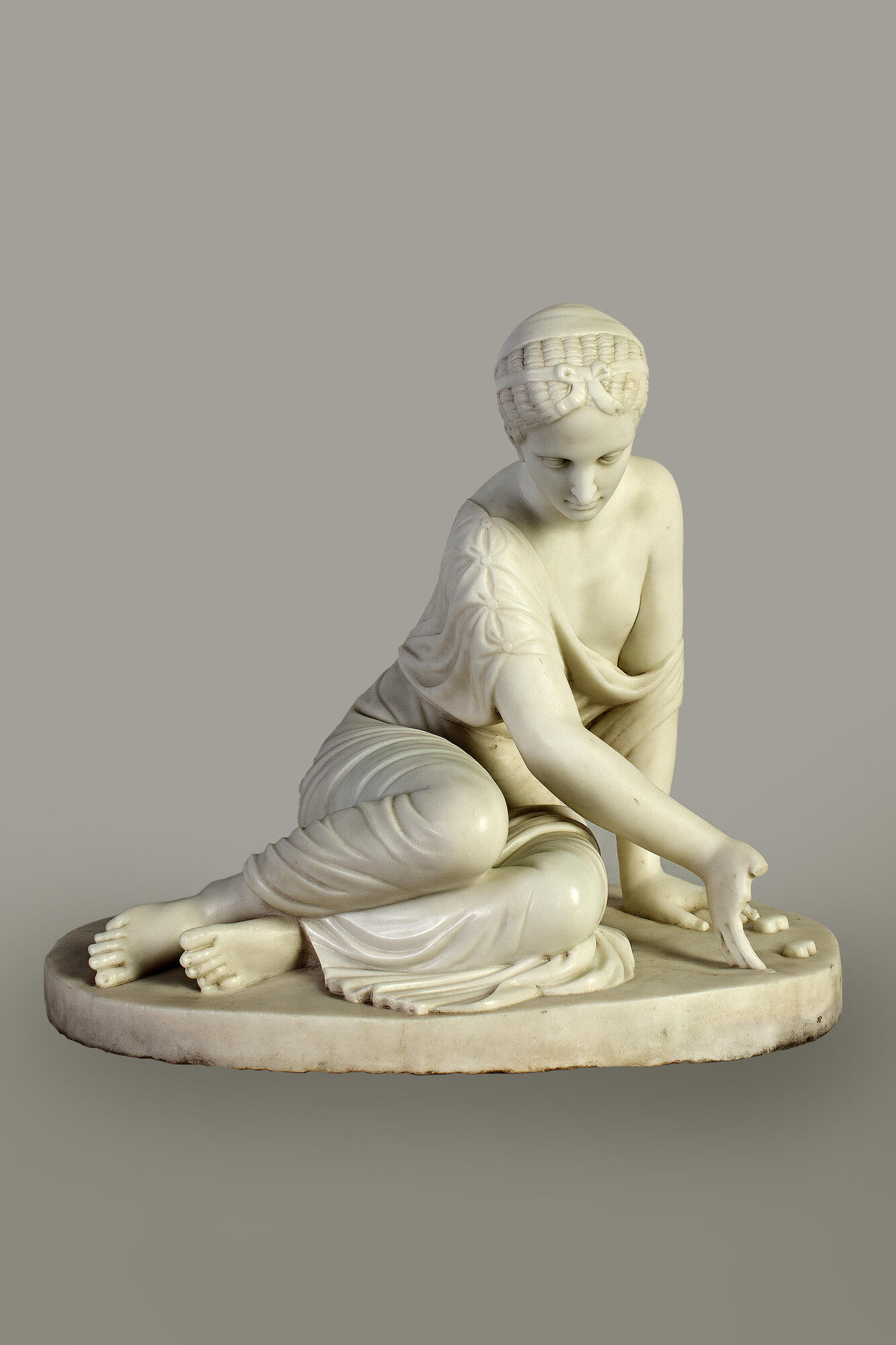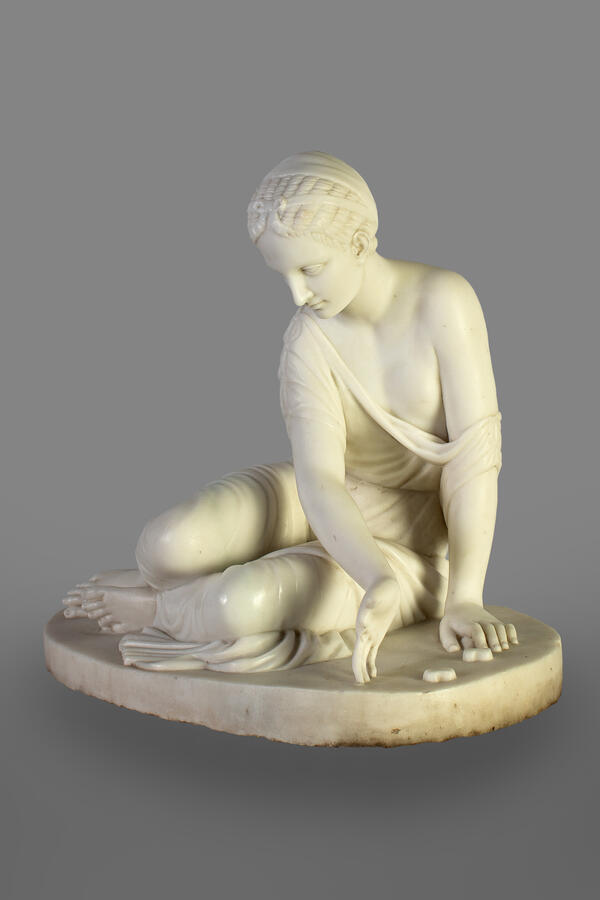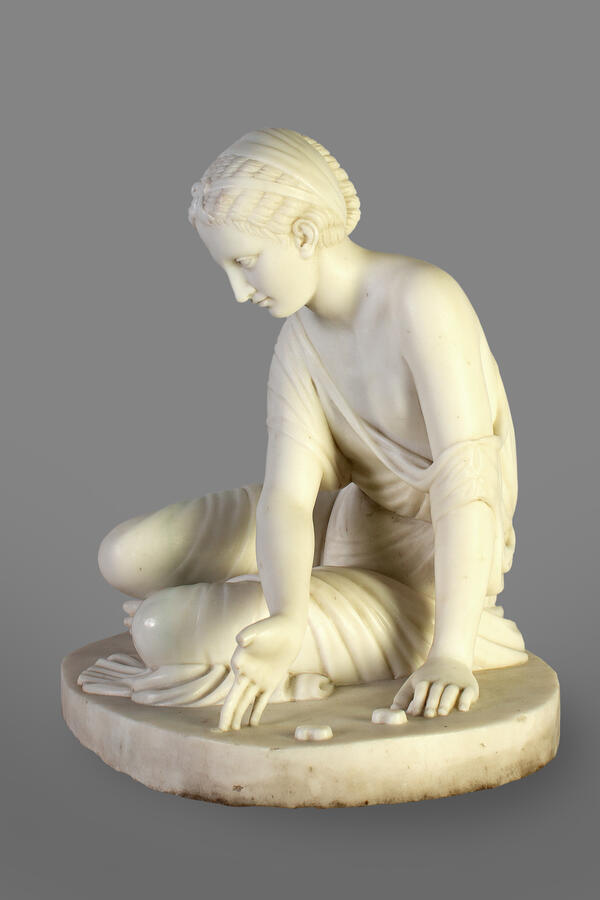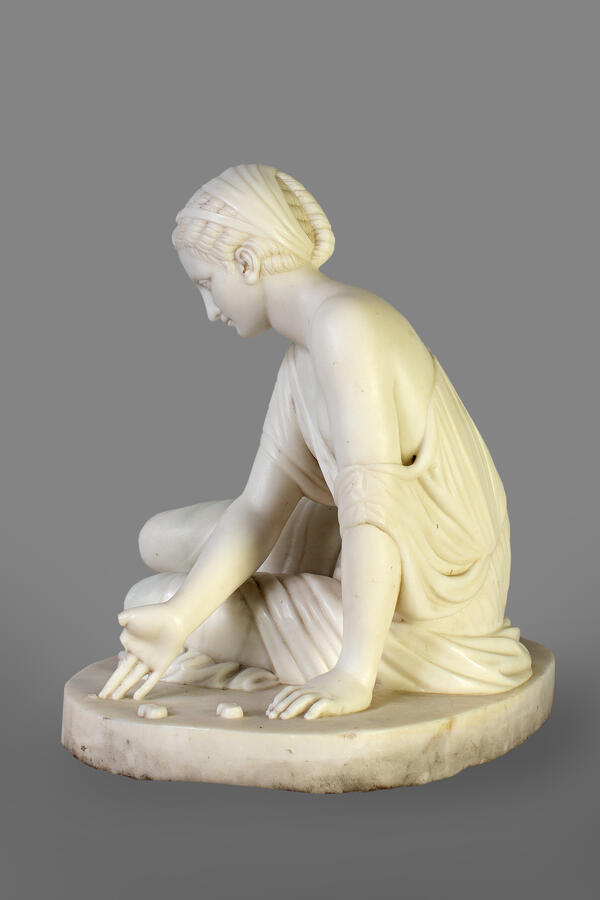“Girl Playing Knucklebones” is the work of the famous French sculptor Louis-Simon Boizot.
Louis-Simon Boizot (1743–1809) was the son of Antoine Boizot, a painter and draughtsman of the Royal Gobelins Manufactory, who devoted his entire life to the noble work of making tapestries. In his youth, the future sculptor studied with Michel-Ange Slodtz at the Paris Royal Academy of Painting and Sculpture, and in 1762, having won the Prix de Rome, he left for Italy to hone his skills. Upon returning to France in 1773, Boizot headed the famous Sèvres Porcelain Manufactory, becoming the successor to Étienne Maurice Falconet, who had created a statue of Peter the Great in Russia.
Boizot received commissions from the royal court of Louis XVI and Marie Antoinette, the Russian imperial court, and many aristocratic families in Europe. Despite his multifaceted talent, Boizot mostly worked in the genre of small-scale sculpture: he made decorative sculptures and models for small allegorical statues.
The antique shape of the figurine “Girl Playing Knucklebones” (that is, the form that brings the design closer to that of works of antiquity) manifests the sculptor’s penchant for ancient times. The sculpture in the museum’s collection is considered a copy of Boizot’s work. The original was commissioned by Count Pyotr Shuvalov for Empress Catherine II and made in 1768. The statue was initially kept in the Olive collection, and later it was transferred to the State Hermitage Museum. Boizot offered his interpretation of the ancient motif, perhaps derived from the statue “Girl Playing Knucklebones” housed in the museum in Berlin, which in turn is a Roman marble copy of the original, created in the 3rd century BC.
There was a similar figurine in the Gatchina Palace. However, it was lost during the Great Patriotic War. Similar pieces can also be found in the Ostankino Palace Museum of Serf Art.
Louis-Simon Boizot used the classical motif and at the same time brought freshness and openness of modernity into the work, which became immensely popular and was copied numerous times.
Louis-Simon Boizot (1743–1809) was the son of Antoine Boizot, a painter and draughtsman of the Royal Gobelins Manufactory, who devoted his entire life to the noble work of making tapestries. In his youth, the future sculptor studied with Michel-Ange Slodtz at the Paris Royal Academy of Painting and Sculpture, and in 1762, having won the Prix de Rome, he left for Italy to hone his skills. Upon returning to France in 1773, Boizot headed the famous Sèvres Porcelain Manufactory, becoming the successor to Étienne Maurice Falconet, who had created a statue of Peter the Great in Russia.
Boizot received commissions from the royal court of Louis XVI and Marie Antoinette, the Russian imperial court, and many aristocratic families in Europe. Despite his multifaceted talent, Boizot mostly worked in the genre of small-scale sculpture: he made decorative sculptures and models for small allegorical statues.
The antique shape of the figurine “Girl Playing Knucklebones” (that is, the form that brings the design closer to that of works of antiquity) manifests the sculptor’s penchant for ancient times. The sculpture in the museum’s collection is considered a copy of Boizot’s work. The original was commissioned by Count Pyotr Shuvalov for Empress Catherine II and made in 1768. The statue was initially kept in the Olive collection, and later it was transferred to the State Hermitage Museum. Boizot offered his interpretation of the ancient motif, perhaps derived from the statue “Girl Playing Knucklebones” housed in the museum in Berlin, which in turn is a Roman marble copy of the original, created in the 3rd century BC.
There was a similar figurine in the Gatchina Palace. However, it was lost during the Great Patriotic War. Similar pieces can also be found in the Ostankino Palace Museum of Serf Art.
Louis-Simon Boizot used the classical motif and at the same time brought freshness and openness of modernity into the work, which became immensely popular and was copied numerous times.






